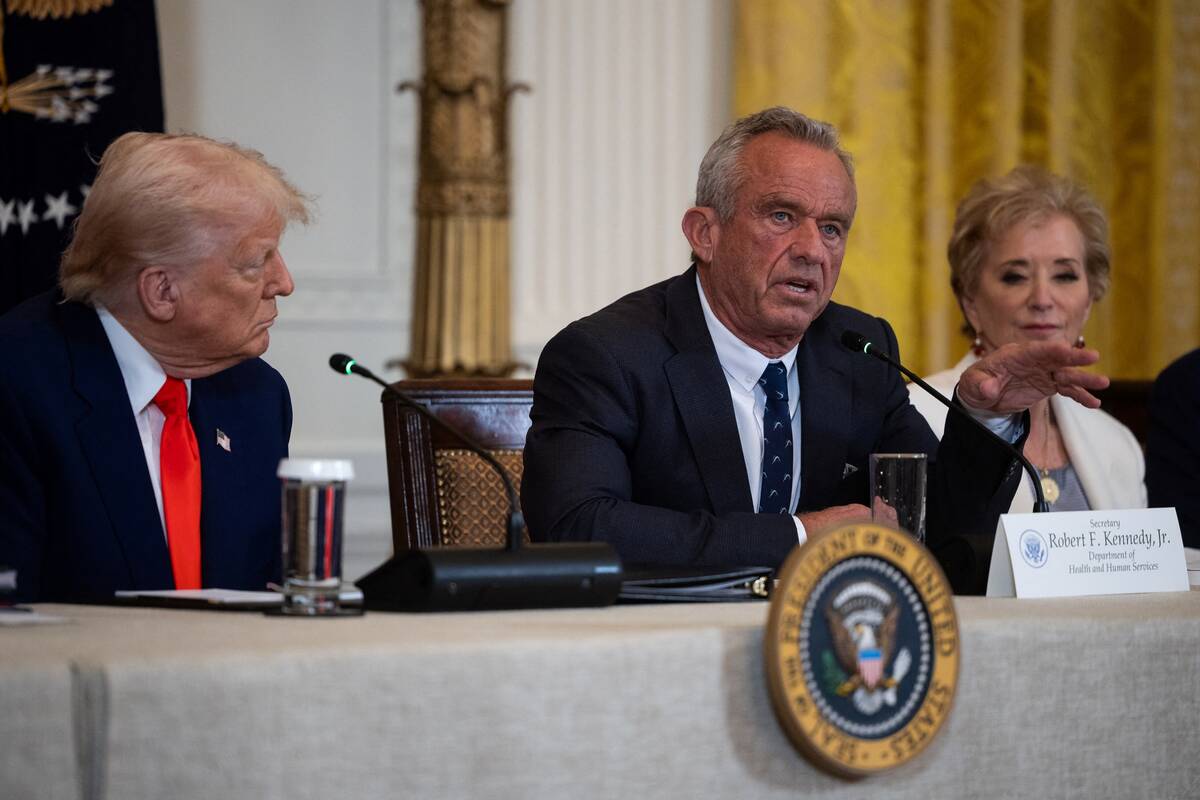Better pastures and a promising corn crop are good news for the United States beef industry, but there is little appetite for herd expansion says an agricultural economist at the University of Kansas.
“There is reason for some renewed optimism in the cow-calf sector compared to maybe six to nine months ago,” said Glynn Tonsor in an Aug. 13 webinar.
“We are close to thoughts of expansion but in aggregate I don’t think it has occurred,” he said.
Last year’s devastating drought and high input costs dampened on the industry but pastures and crops have improved considerably in this growing season.
Read Also

Draft ‘MAHA’ commission report avoids pesticide crackdown feared by farm groups
The White House will not impose new guardrails on the farm industry’s use of pesticides as part of a strategy to address children’s health outcomes, according to a draft obtained by Reuters of a widely anticipated report from President Donald Trump’s ‘Make America Healthy Again’ commission.
On a national basis compared to last year when 75 percent of pasture and hay supplies were in jeopardy, this year about a third of the country is in difficulty.
Pastures are actually worse than last year in the western region where about 10 percent of the beef cows reside in New Mexico, Nevada, Arizona, Utah, Washington, California and Oregon.
The Great Plains from Kansas to the Canadian border are better than 2012 but pasture conditions are still rated as below the five year average. About 30 percent of the national cow inventory resides in Kansas, Colorado, Montana, Nebraska, as well as Wyoming, North and South Dakota.
Oklahoma, Texas and the cornbelt area where 50 percent of the cows are found, are faring better. The most optimistic region is the southeast because they ended last year in better than normal conditions and have had a good year.
In the markets, calf prices are projected upwards by $10-12 per hundredweight based on Kansas markets.
The cost of gain is going down somewhat but feedlots are still in trouble.
Excess capacity concerns continue to grow and closeouts have been at historically high losses. There is some optimism for improvement later this year but if producers decide to hold back heifers that optimism would be short term.
Other uncertainties like the legal decisions over country of origin labeling regulation and the Aug. 7 announcement by Tyson Fresh Meats that it will no longer buy cattle fed the supplement Zilmax are exacerbating concerns among feedlots.
Feedlot losses have averaged between $150-200 per head but toward the end of the year the losses could be smaller because fed cattle prices could improve by December going to about $130 per hundredweight compared to $118 per cwt in July.
However demand for beef has been improving even though per capita consumption is going down and cattle supplies are shrinking.
Demand is not the same as consumption which is actually dropping. Demand is the value of the product while consumption is a quantity without considering the value.
Part of that better demand is linked to a growing U.S. GDP
where improved consumer incomes have a large impact on beef demand. The more positive it is, the better the demand for beef.
“There is something more valuable in the eyes of the consumer about this beef product to allow this beef price to go up even though per capita consumption was down,” Tonsor said.
Kansas State economists were commissioned to study future beef demand.
They found seven broad demand determinants when people buy beef. The most important is food safety, product quality, price relative to other meats, nutrition, health, sustainability and environmental care and social aspects like animal welfare.
The beef industry can influence demand with more focus and investment in food safety and improved product quality.
More consumer education is also needed with an emphasis on
younger people in their mid 20s. They will be the future high income earners and shoppers.
The social aspects of animal welfare, environmental impacts and sustainability issues cannot be ignored but do not offer the same payoff as food safety or product quality.
Global beef demand is improving and the health of the U.S. industry will depend on exports.
“The U.S. has to export 15 percent or more (of its total production) 10 years from now in order to be economically viable. I think that is where the growth is going to be,” he said.
The same could be said for Canada because both countries produce a similar grainfed product as opposed to grassfed beef from South America or Australia which goes to different markets.
“Canada produces the closest competing meat on the global stage so I think in many ways we are on a similar path,” he said.
Reports about export expansion from countries like India is worth noting, however that beef is derived from water buffalo and has a different place in the global marketplace.
To see the complete demand study visit, www.beefboard.org/evaluation/130612demanddeterminantstudy.asp.
For charts to predict cattle prices visit, www.agmanager.info/livestock/marketing/graphs/cattle/prices/VOG.asp















